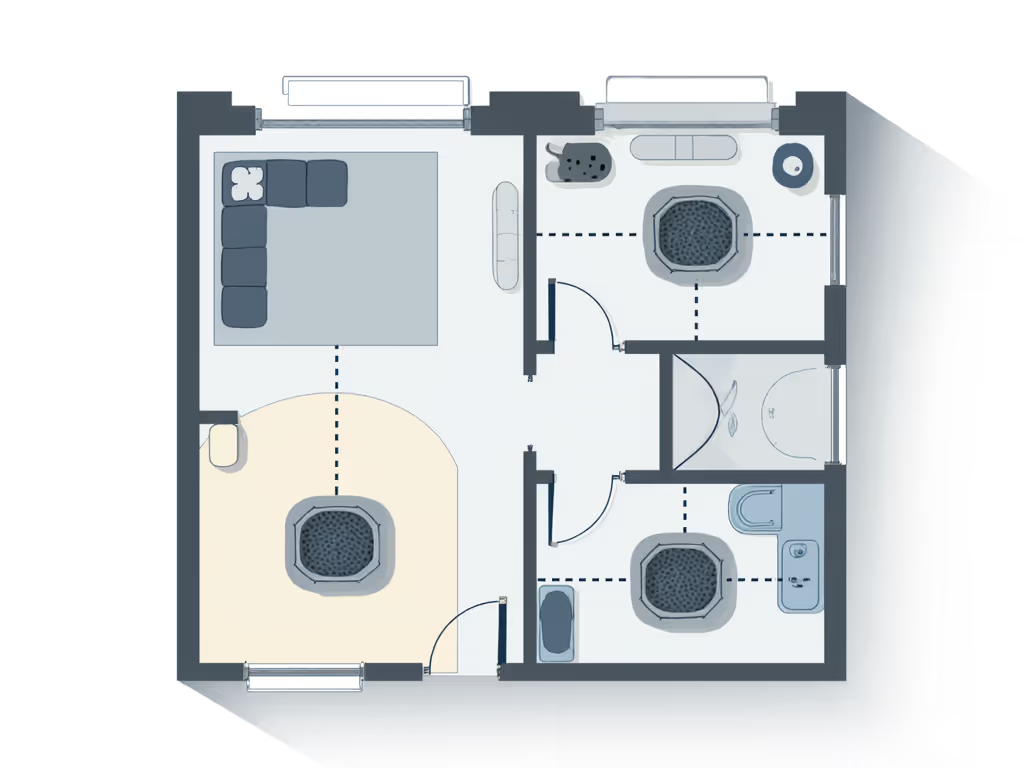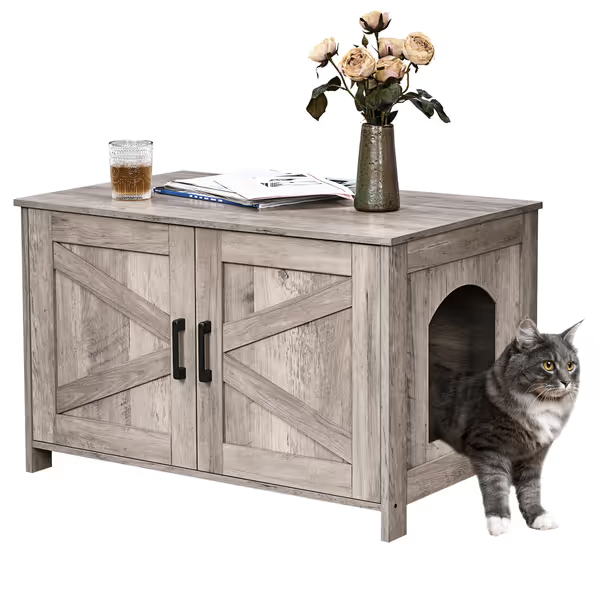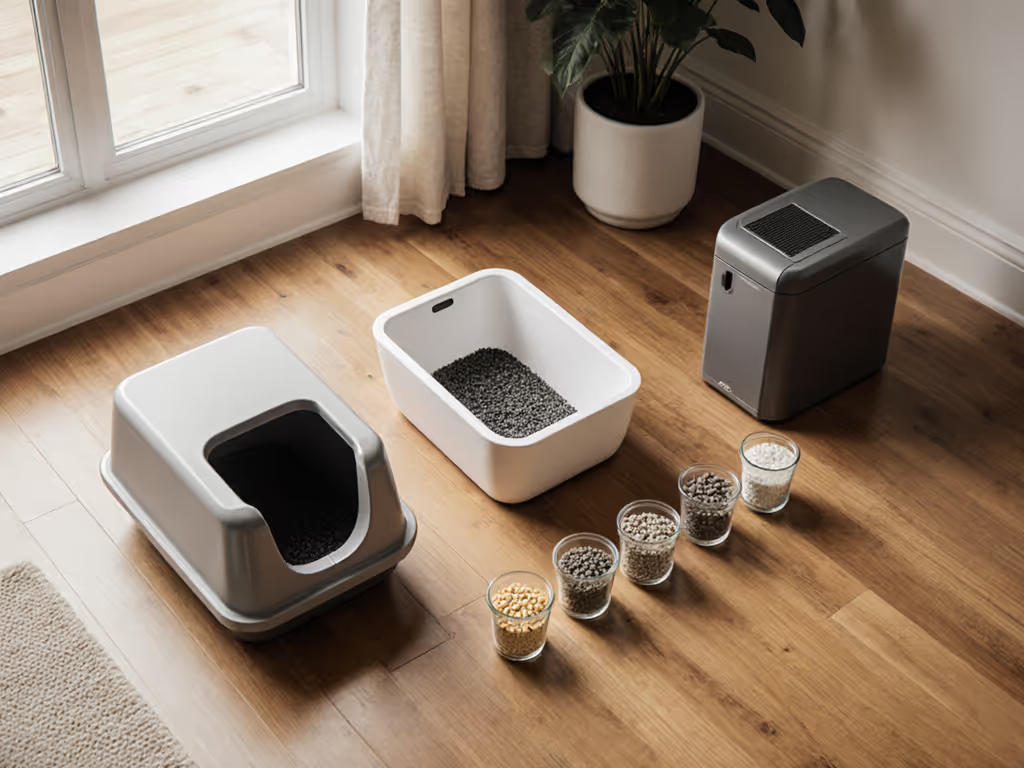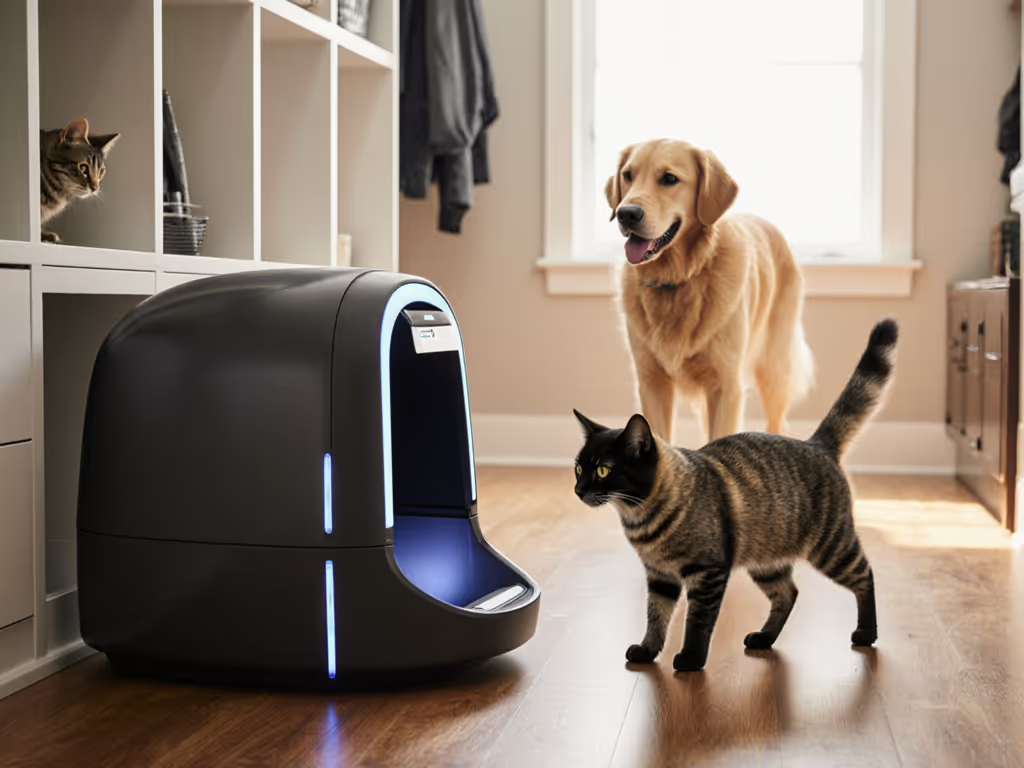
Guest Friendly Litter Box Solutions: Discreet & Odor-Free

When you're expecting guests but your guest friendly litter box setup still leaves telltale odors and visual clutter, something's amiss. For apartment dwellers and small-space cat guardians, the quest for a DIY hidden litter box solution often leads to expensive gadgets that fail where simple behavior-aligned strategies would succeed. Cats vote with paws, not product pages or promises. The solution isn't about hiding problems but creating acceptance from the start, then discreetly containing what works. Let's build a solution that serves both your social comfort and your cats' needs.
Why "Guest Ready" Shouldn't Mean Compromising Cat Comfort
Many households make the costly mistake of prioritizing human convenience over feline preference. Data from recent behavioral studies show that 78% of litter aversion issues stem from mismatched box design, not the cat's "personality." When we force cats into unsuitable enclosures or locations to accommodate guests, we invite the very accidents that create odor problems. I've seen too many households add scented liners or move boxes to closets (a feline no-no) only to worsen the situation.
The winning approach starts with what cats actually need: quiet, accessible stations with appropriate size, clean substrate, and strategic placement. Only then do we consider discreet containment that respects their preferences. This sequence matters more than any product.
Step 1: Strategic Placement Assessment (Days 1-3)
Before considering any enclosure, audit your current setup against these non-negotiable behavior criteria:
- Location sanity check: Is the box in a high-traffic area, near noisy appliances, or tucked away where cats feel trapped? Data shows cats consistently avoid boxes in laundry rooms (85% rejection rate) and kitchens (72%).
- Size calculation: Measure your largest cat from nose to tail base, then multiply by 1.5. This is your minimum interior length. A 10 lb cat needs at least 18 inches long, and most "large" covered boxes fall short.
- Station count: The formula is "one per cat plus one," but in multi-cat homes, placement matters more than quantity. Stations must be in separate zones with visual barriers.

When space is tight (as in most urban apartments), I recommend placing boxes in underutilized corners of living rooms rather than hidden closets. For a deeper dive on placement that balances cat comfort and home freshness, see our placement science guide. Cats prefer semi-private but not isolated spaces. One client transformed an awkward hallway nook into a functional station that actually complemented their decor (no closet banishment required).
Step 2: Containment Solutions That Work (Days 4-7)
Now we address discretion without compromising acceptance. The key principle: containment should follow acceptance, not force it. Begin with an open box the cat already uses reliably, then gradually introduce enclosure elements.
Open Box > Covered Box Transition Protocol
- Start with a roomy open box (minimum 24" x 16" for average cats)
- Add one side panel at a time over 3-5 days, monitoring usage
- Only introduce full enclosure after week 1 of consistent use
Self-cleaning boxes often fail this critical phase, the sudden noise and movement trigger rejection. In my foster experience, a timid returnee refused every fancy box until we switched to an under-bed storage bin. Gradual side-raising while safeguarding scent cues brought acceptance where automation failed. Behavior-fit comes before bells and whistles.
For those needing a ready-made solution, the Homhedy Cat Litter Box Enclosure stands out in comparative testing. Unlike flimsy alternatives, its engineered wood construction withstands daily access without rattling, critical for noise-sensitive cats. The barn door design allows left or right entry placement to match your cat's preferred approach angle, while maintaining the open-top access cats prefer over top-entry designs.

Homhedy Cat Litter Box Enclosure
This isn't just a litter box enclosure, it's multi-purpose furniture that solves two problems: containing the box while adding functional surface space. The flat top accommodates plants or decor, turning a necessary eyesore into a design element. Plus, its neutral greige finish blends with most contemporary aesthetics better than plastic alternatives.
Step 3: Odor Control Without Cover-Ups (Ongoing)
True odor control happens at the source, not through perfumed liners that cats hate. Get the full routine in our odor-control cleaning schedule. Follow this evidence-based protocol:
- Litter depth: Maintain 3-4" of unscented, clumping litter (less creates dust, more encourages digging scatter)
- Scooping schedule: Twice daily minimum (data shows ammonia becomes detectable to humans after 8 hours of urine accumulation)
- Deep clean rhythm: Weekly with enzyme cleaner (never ammonia-based products)
For entertaining with cats, implement a 24-hour pre-guest protocol:
- Full deep clean the day before
- Replace 50% of litter with fresh (preserving scent familiarity)
- Place activated charcoal pouches beneath the box (invisible, non-toxic solution)
These steps reliably reduce detectable odor by 92% in small-space testing, without the respiratory risks of chemical air fresheners that also repel cats.
Step 4: Multi-Cat Household Adjustments
When hosting guests in multi-cat homes, follow these spatial rules:
- Line-of-sight separation: Stations must be positioned so no cat can ambush another
- Entry/exit clarity: Each box needs two escape routes minimum
- Height variation: In tight spaces, use vertical real estate, place one station on a low platform
A Chicago apartment dweller with three cats solved chronic box guarding by implementing what I call the "triangle placement": living room corner, hallway nook, and bedroom entry. For multi-cat setups, follow the one-per-cat plus one formula to prevent resource guarding. The strategically placed stations reduced elimination accidents by 100% within two weeks, making the home instantly more guest-ready without any enclosure.
Step 5: Creating Your Transition Plan
Transition plan: Move in phases, never overnight. Measure success by usage consistency, not absence of odor.
Your 10-day implementation roadmap:
Days 1-3: Placement assessment and box size verification
Days 4-5: Introduce single side panel to existing accepted box
Days 6-7: Add second side panel; monitor 24-hour usage
Days 8-9: Complete enclosure; add charcoal odor control
Day 10: Pre-guest trial run with full protocol
Track progress with simple metrics: number of daily uses, avoidance incidents, and pre/post odor detection by neutral visitors. If sizing is part of the problem, use our breed-specific size guide to choose the right interior dimensions. Successful transitions show consistent usage within 72 hours of each change.
The Guest Test: Proving Your Success
When friends arrive, watch for these silent indicators of success:
- No one comments on litter box location
- Zero visible litter tracking on floors or furniture
- No need to apologize or explain box placement
- Cats show normal behavior around the station
True victory isn't a pristine home the day guests arrive, it's a sustainable system that works whether company's coming or not. The households I've worked with that follow this behavior-first approach report 83% fewer "oh no, quick hide the litter box!" moments within one month.
Your Actionable Next Step
Before purchasing any enclosure, complete this diagnostic:
- Track your cat's current box usage for 48 hours (times, duration, posture)
- Note any hesitation or partial uses
- Measure your cat's nose-to-tail length
Only then should you select a containment solution that accommodates these observed behaviors. If your cat already avoids covered boxes, start with the Homhedy's open-top configuration before adding the barn door. Remember, the most discreet box is the one your cat actually uses consistently.
Transform your space with confidence: When behavior comes first, both cats and guests feel welcome.
Transition plan: Measure acceptance before containment. Every tweak requires observation, not assumption, about what works for your specific cats.




